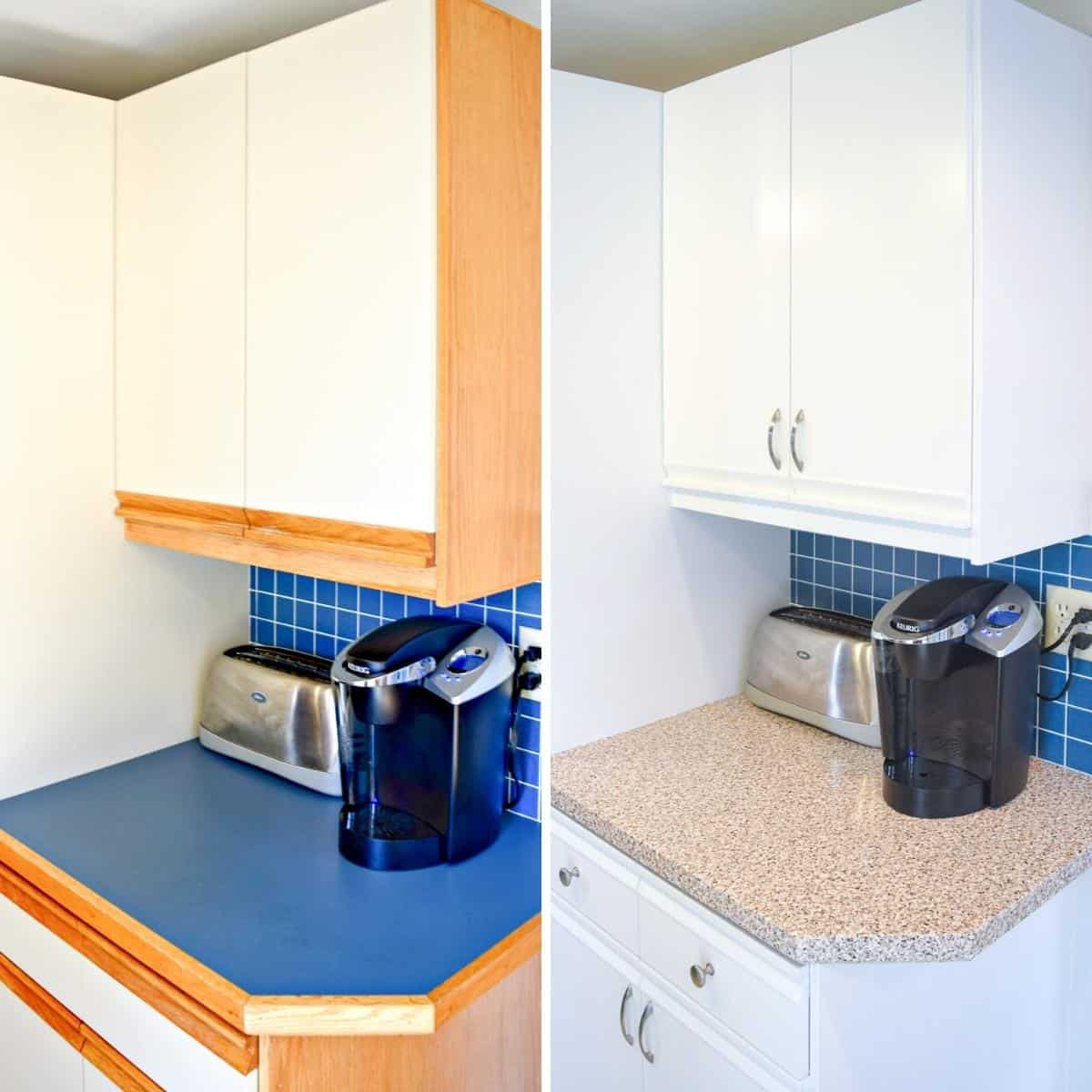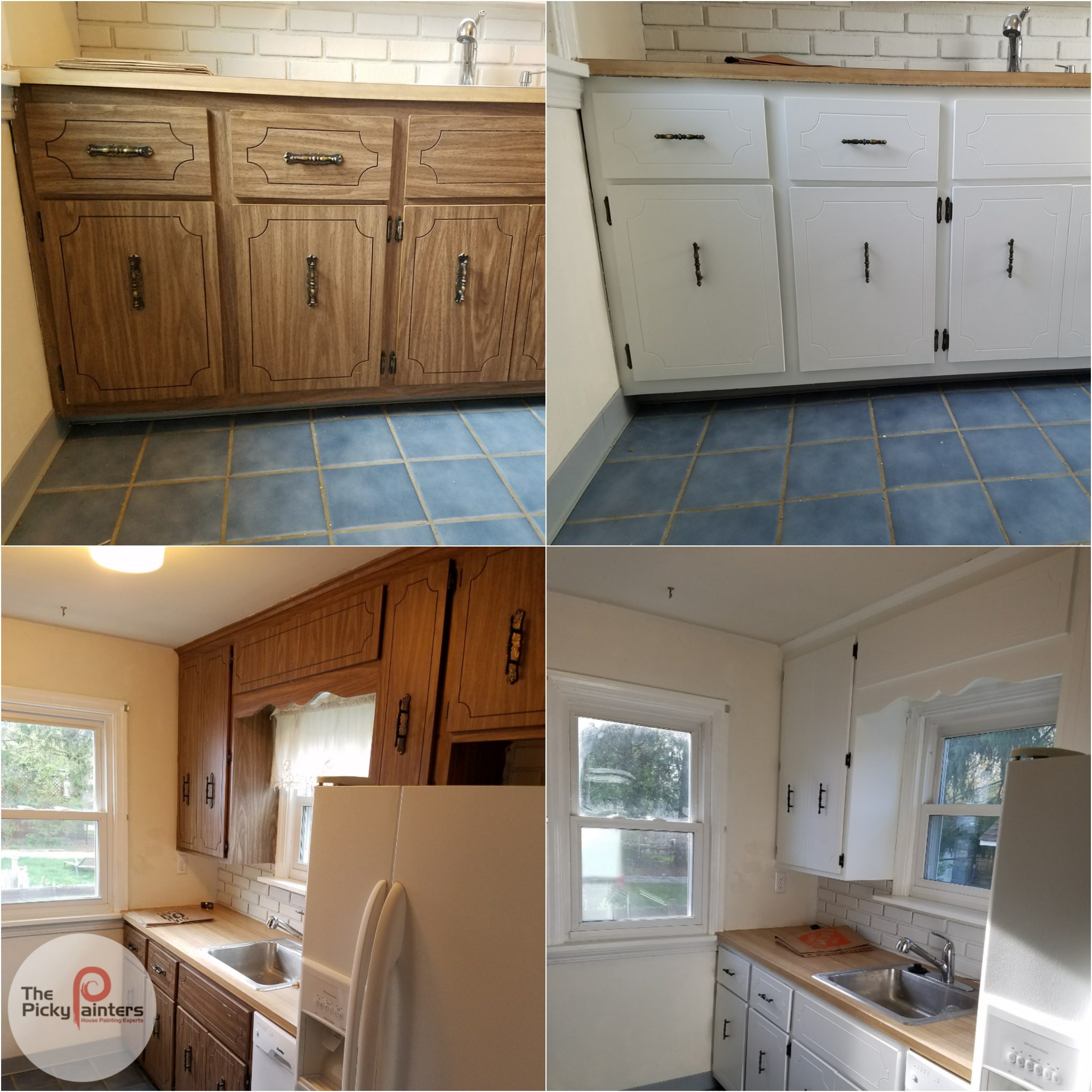Understanding Formica and Paint Removal: How To Remove Paint From Formica Cabinets

Formica is a durable, laminate material commonly used for kitchen countertops, cabinet doors, and other surfaces. Its popularity stems from its resistance to scratches, stains, and heat. However, when paint is applied to Formica, it can be challenging to remove without damaging the underlying surface.
Types of Paint Used on Formica Cabinets
The type of paint used on Formica cabinets can significantly impact the removal process. Here’s a list of common paint types used on Formica surfaces:
- Latex Paint: This water-based paint is commonly used for interior applications. It dries quickly and is generally easier to remove than oil-based paints.
- Oil-Based Paint: This type of paint is known for its durability and gloss finish. It can be challenging to remove from Formica due to its thick, oily nature.
- Epoxy Paint: Epoxy paint is a highly durable, two-part coating that creates a hard, non-porous finish. Removing epoxy paint from Formica is extremely difficult and often requires professional assistance.
Challenges of Removing Paint from Formica
Removing paint from Formica can be challenging due to the material’s non-porous nature. The paint adheres tightly to the surface, making it difficult to remove without damaging the underlying Formica. Additionally, the type of paint used, the age of the paint, and the application method can all influence the difficulty of removal.
Methods for Paint Removal

There are a few different ways to remove paint from Formica cabinets, each with its own set of pros and cons. Choosing the right method depends on the type of paint, the condition of the Formica, and your personal preferences.
Chemical Strippers
Chemical strippers are a popular option for removing paint from Formica. They work by breaking down the chemical bonds in the paint, making it easier to scrape off.
- Pros: Chemical strippers are effective at removing most types of paint, including latex, oil-based, and epoxy paints. They are also relatively quick and easy to use.
- Cons: Chemical strippers can be dangerous if not used properly. They can also damage the Formica if they are left on for too long. In addition, they release strong fumes, so good ventilation is crucial.
To use a chemical stripper, you will need:
- Chemical paint stripper
- Paint scraper
- Putty knife
- Gloves
- Eye protection
- Ventilation
Heat Gun
A heat gun is another effective way to remove paint from Formica. It works by softening the paint, making it easier to scrape off.
- Pros: Heat guns are relatively safe to use and do not release harmful fumes. They are also effective at removing most types of paint.
- Cons: Heat guns can be time-consuming to use, especially for large areas. They can also damage the Formica if they are used too close or for too long. Additionally, they require caution to avoid burns.
To use a heat gun, you will need:
- Heat gun
- Paint scraper
- Putty knife
- Gloves
- Eye protection
Sanding, How to remove paint from formica cabinets
Sanding is a good option for removing paint from Formica if you are only dealing with a small area or if the paint is thin.
- Pros: Sanding is relatively inexpensive and easy to do. It is also a good option for removing paint from delicate areas.
- Cons: Sanding can be time-consuming and labor-intensive, especially for large areas. It can also damage the Formica if you are not careful. Additionally, it creates dust, requiring proper protection and cleanup.
To use sanding, you will need:
- Sandpaper (various grits)
- Sanding block
- Dust mask
- Gloves
- Eye protection
Comparison of Methods
Here is a table comparing the effectiveness, time required, safety, and cost of each method:
| Method | Effectiveness | Time Required | Safety | Cost | Chemical Strippers | High | Moderate | Moderate | Moderate | Heat Gun | High | Moderate | Moderate | Moderate | Sanding | Moderate | High | High | Low |
|---|
Note: The effectiveness, time required, safety, and cost of each method can vary depending on the type of paint, the condition of the Formica, and the experience of the person using the method.
Step-by-Step Guides for Each Method

Now that you understand the basics of Formica and paint removal, let’s dive into the practical steps for each method. We’ll cover everything from safety precautions to helpful tips, ensuring you get the job done right.
Chemical Stripper Method
Chemical strippers are a popular choice for removing paint from Formica because they are effective and relatively easy to use. However, it’s important to remember that these chemicals can be hazardous, so it’s crucial to follow safety guidelines.
- Prepare the Work Area: Choose a well-ventilated area, preferably outdoors, and cover surrounding surfaces with drop cloths. Wear protective gear, including gloves, a respirator, and eye protection.
- Apply the Stripper: Apply the stripper generously to the painted surface, ensuring even coverage. Use a brush or roller for easier application.
- Allow Time to Work: Follow the manufacturer’s instructions regarding the dwell time, which is the amount of time the stripper needs to soften the paint.
- Scrape the Paint: After the dwell time, use a putty knife or scraper to remove the softened paint. Work carefully to avoid damaging the Formica surface.
- Clean the Surface: Once the paint is removed, use a damp cloth to wipe away any remaining stripper and paint residue.
- Neutralize the Stripper: Some strippers require a neutralizing agent to prevent damage to the Formica. Follow the manufacturer’s instructions for neutralization.
Heat Gun Method
This method involves using a heat gun to soften the paint, making it easier to remove. It’s a less messy option compared to chemical strippers but requires careful handling of the heat gun.
- Prepare the Work Area: Ensure adequate ventilation and wear protective gear, including gloves, heat-resistant gloves, and eye protection.
- Heat the Paint: Use the heat gun to heat the paint, moving it back and forth across the surface. Avoid staying in one spot for too long, as this can damage the Formica.
- Scrape the Paint: Once the paint softens, use a putty knife or scraper to remove it. Work carefully to avoid damaging the Formica surface.
- Clean the Surface: After removing the paint, use a damp cloth to wipe away any remaining residue.
Sanding Method
This method involves using sandpaper to gradually remove the paint. It’s a time-consuming process but can be effective for removing thin layers of paint.
- Prepare the Work Area: Choose a well-ventilated area and cover surrounding surfaces with drop cloths. Wear protective gear, including a dust mask, gloves, and eye protection.
- Start with Coarse Grit: Begin with coarse-grit sandpaper (80-120 grit) to remove the majority of the paint.
- Progress to Finer Grit: Gradually progress to finer grit sandpaper (180-220 grit) to smooth the surface.
- Clean the Surface: After sanding, use a damp cloth to wipe away any dust and debris.
Sandblasting Method
Sandblasting is a powerful method for removing paint from Formica, but it requires specialized equipment and expertise. It’s best left to professionals, as improper use can damage the Formica surface.
- Professional Assistance: Hire a professional sandblasting service to remove the paint from your Formica cabinets.
How to remove paint from formica cabinets – Removing paint from Formica cabinets can be a challenging task, requiring specialized techniques and tools. One approach involves using a heat gun to soften the paint, followed by careful scraping with a putty knife. However, if the Formica is damaged, it may be more practical to consider a complete cabinet makeover, perhaps incorporating a modern bedroom TV unit, as seen in this modern bedroom tv unit design, which seamlessly integrates storage and entertainment features.
Ultimately, the choice of approach will depend on the extent of the paint removal required and the desired aesthetic for the kitchen or bedroom space.
Removing paint from Formica cabinets can be a challenging task, often requiring specialized techniques. A common approach involves using a heat gun to soften the paint, followed by careful scraping with a putty knife. This method is particularly effective for older paint layers, while newer paints may require stronger chemical strippers.
If you’re seeking inspiration for a modern update, consider an industrial mid century modern bedroom aesthetic, which often incorporates exposed metal and reclaimed wood elements. These design principles can be incorporated into your cabinet renovation, lending a contemporary edge to your space.
Once the paint is removed, consider sanding the Formica surface for a smooth finish, ready for staining, painting, or a new veneer.
